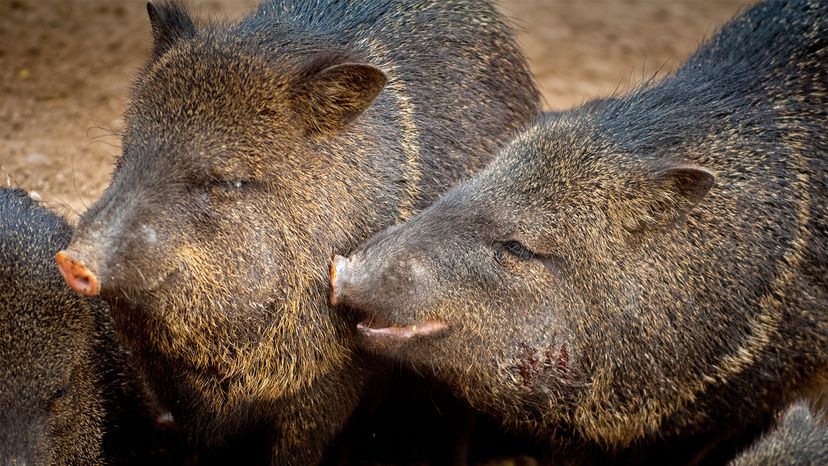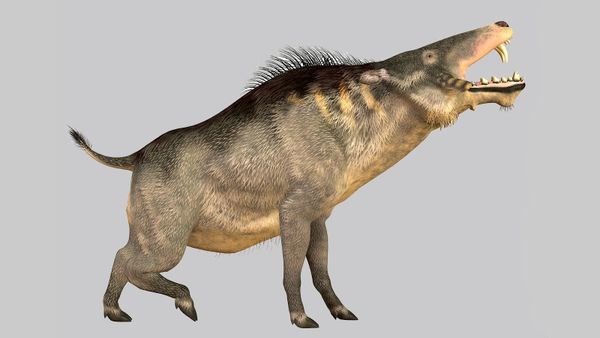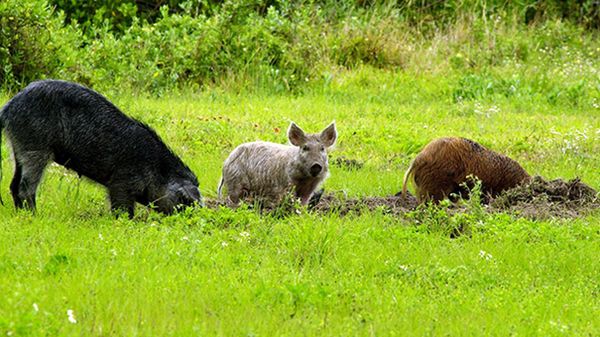
If you don't know what a javelina (pronounced have-a-LEEN-a) is, you shouldn't worry that you're missing out on a big secret. Many folks living outside the southwest U.S. (particularly Arizona and Texas) haven't heard of the animal, either. But the tide might just be turning thanks to a Tucson real estate agent who captured a lone javelina hotfooting it at top speed alongside an apartment complex via cellphone video recently.
The short video went on to propel the speeding creature to social media fame overnight, and the clip has since shown up on Twitter amusingly set to tunes from the "Chariots of Fire" theme song to Bruce Springsteen's "Born to Run." The dashing javelina even made a cameo appearance in the pages of The New York Times, and was a hot topic on numerous TV news shows as well.
Advertisement
When I first saw a picture of a javelina, I immediately thought it looked like a warthog. And although the animal does tend to resemble the wild pig that I first became familiar with while growing up in Arkansas (it even goes by the nicknames "muskhog" and "skunk pig"), I couldn't have been more wrong. While the two are similar in appearance and habits, turns out they're not related at all. The warthog is indeed a true pig, while the javelina belongs to an entirely separate family of mammals called the "collared peccary," or pecari tajacu.
"Peccaries and pigs are distant relatives, but have many differences," explains Emily Kornmuller, mammalogy and ornithology Keeper at Tucson's Arizona-Sonora Desert Museum, in an email interview. "Peccaries are New World animals [animals from the Americas – North, Central and South], don't have a tail, and have a scent gland near the base of their tail that they use to identify each other and mark their territory. Pigs are Old World animals [animals from Africa, Asia and Europe], have a tail and don't have that scent gland."
A few other characteristics differentiating them from pigs, according to the Texas Parks & Wildlife Department: Javelinas are smaller (typically about 2 feet [0.6 meters] tall, and weigh between 35 to 55 pounds [15 to 25 kilograms]), have an unnoticeable tail and only one dew claw on the hind foot. They also sport a coarse, grizzled grayish coat with a white band of hair around the shoulder or "collar" (hence the name collared peccary), and are more social or herd-like animals.
Much like pigs, however, they apparently do have cute little snouts. "We'll 'boop the snoot' with our javelinas (the museum currently has nine in residence)," says Kornmuller, "and they seem to enjoy it." [For the uninitiated, to 'boop the snoot' is to affectionately tap the nose of the boopee.] Curious to know more about this bodacious beast easily recognizable by its large, ovular head, sharp tusks and short, slender legs holding up a proportionally big body? Here are eight more javelinas facts you might find interesting:
Advertisement

